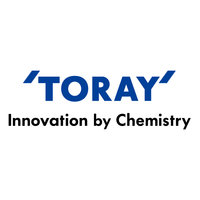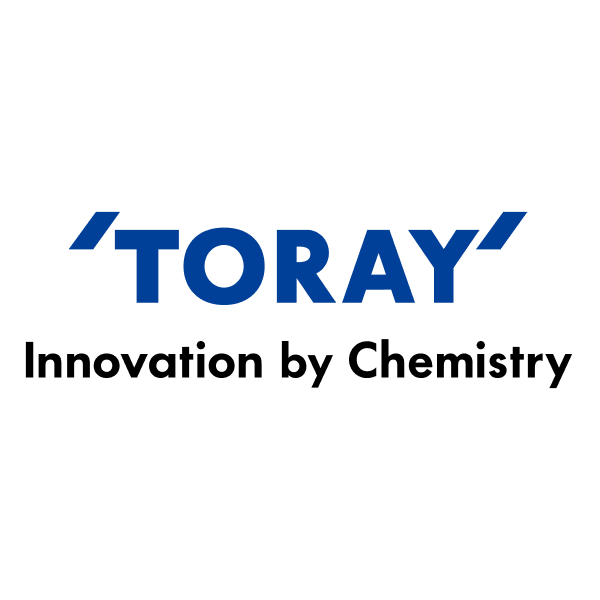
Toray Industries Inc
TSE:3402


Utilize notes to systematically review your investment decisions. By reflecting on past outcomes, you can discern effective strategies and identify those that underperformed. This continuous feedback loop enables you to adapt and refine your approach, optimizing for future success.
Each note serves as a learning point, offering insights into your decision-making processes. Over time, you'll accumulate a personalized database of knowledge, enhancing your ability to make informed decisions quickly and effectively.
With a comprehensive record of your investment history at your fingertips, you can compare current opportunities against past experiences. This not only bolsters your confidence but also ensures that each decision is grounded in a well-documented rationale.
Do you really want to delete this note?
This action cannot be undone.

| 52 Week Range |
635.2
962.2
|
| Price Target |
|
We'll email you a reminder when the closing price reaches JPY.
Choose the stock you wish to monitor with a price alert.
This alert will be permanently deleted.
 Toray Industries Inc
Toray Industries Inc


 You don't have any saved screeners yet
You don't have any saved screeners yet

Thank you very much for joining us today despite your busy schedule. On behalf of Toray Group, I would like to take this opportunity to extend my gratitude towards your continued understanding and your interest in our management and business activities.
Now I would like to follow the table of contents shown on Page 1. I would like to begin with a brief summary of business results for the second quarter ended September 30, 2020.
Please turn to Page 3. Consolidated revenue for the second quarter declined 19.2% compared with the same period a year earlier to JPY 856.1 billion.
Core operating income decreased 52.3% to JPY 34.1 billion, while profit declined by 91.2% to JPY 4.5 billion.
Page 4 is about special items. Special items for the 6-month period worsened by JPY 25.6 billion to minus JPY 28.6 billion, compared with the same period of the previous fiscal year, mainly due to CMA, our U.S. subsidiary recording impairment losses of JPY 24 billion due to profitability decline caused by weak demand for aircraft.
Page 5 is about assets, liabilities, equity and free cash flow. As of end of September, total assets stood at JPY 2,717.1 billion, a decrease of JPY 16.4 billion from the end of the previous fiscal year, mainly due to declines in trade receivables. Total liabilities decreased by JPY 12.7 billion to JPY 1,519.9 billion compared with the end of the previous fiscal year, owing mainly to declines in trade payables. Total equity decreased by JPY 3.6 billion compared with the end of the previous fiscal year to JPY 1,197.2 billion. Owner's equity was JPY 1,116.5 billion. Interest-bearing liabilities was JPY 1,022.2 billion. And D/E ratio was 0.92 points. Free cash flow was positive at JPY 39.2 billion.
Page 6 explains about capital expenditures, depreciation and amortization and R&D expenditures. Capital expenditures during the 6-month period under review was JPY 65 billion, while depreciation and amortization was JPY 59.1 billion. And R&D expenditures was JPY 30.2 billion. The major capital expenditure projects are as described on this slide.
Next, this graph on Page 7 describes the factor analysis of JPY 37.3 billion decrease in core operating income for the 6 months' period on a year-to-year comparison. The difference in quantity was a minus JPY 62.3 billion due to the decrease in sales and production with the impact of COVID-19. The net change in price was up plus JPY 8 billion. This was due to the decline in raw material prices compared to the same period of the previous fiscal year. Cost variance, et cetera, was plus JPY 17.8 billion as a result of efforts to reduce operating expenses, production fixed costs and other expenses.
The chart on Page 8 shows the revenue and core operating income results by segment.
Using Page 9 and after, I would like to explain the results of each segment.
First, Fibers & Textiles. Revenue of the overall segment declined 21.8% to JPY 330.2 billion compared with the same period of the previous fiscal year. And core operating income fell 50% to JPY 15.8 billion. The net change in price was positive, reflecting the decline in raw materials prices. However, difference in quantity was significantly negative due to the impact of the stagnation of production activities and consumption behavior caused by the COVID-19 in Japan and overseas.
In the apparel applications, demand declined due to lockdown and closure of retail stores in various countries. Also, in the industrial applications, sales volume for the mainstay automotive applications decreased as automobile manufacturers suspended operations and decreased production volume.
Demand for nonwoven fabrics increased for the applications of medical gowns and masks, but fell short of offsetting the decline in overall sales volume in the segment.
Page 10 is the Performance Chemicals segment. Revenue declined 16.9% to JPY 327.3 billion compared with the same period of the previous fiscal year. And core operating income fell 27.6% to JPY 24.1 billion. Cost variance, et cetera, was positive because of the cost reduction efforts. And the net change in price also turned positive, reflecting the decline in raw material prices. However, difference in quantity was significantly negative due to the impact of the stagnation of production activities caused by the COVID-19.
I would like to explain the conditions of each business on the next page. In the resins business, demand from the automotive and industrial applications declined in Japan and overseas. The chemicals business was affected by the decline in the basic chemicals market.
In the films business, demand for battery separator films for lithium ion secondary batteries remained low.
The electronic and information materials business was affected by lower production at OLED-related customers.
Page 12 is the Carbon Fiber Composite Materials segment. Revenue declined 25.5% to JPY 89.3 billion compared with the same period of the previous fiscal year and posted core operating loss of JPY 0.3 billion, a decline of JPY 12.1 billion from a year earlier.
Toray group worked towards drastic cost reduction, and sales of wind turbine blades in the industrial applications remained strong, while aerospace applications were affected by the decline in the production rate of commercial aircraft.
I would like to explain the status of each application on the next page. Aerospace applications were affected by the decline in the production rate of aircraft at major customers due to the impact of COVID-19 as well as shutdown of plants.
Sports applications remained slow due to the impact of COVID-19.
In terms of regular tow products among the industrial applications, demand for environment and energy-related fields led by compressed natural gas tank applications and the automotive applications for luxury cars in Europe were weak due to the impact of COVID-19.
As for large tow products, shipment of wind turbine blade applications remained strong.
As the composite business, shipments of materials of medical devices for the diagnosis of COVID-19 pneumonia expanded.
Meanwhile, sales at an overseas composites-related subsidiary decreased due to lower demand for automotive applications with the impact of COVID-19.
Page 14 in the Environment & Engineering segment, revenue declined 10.3% to JPY 78.2 billion compared with the same period of the previous fiscal year, while core operating income increased 4.4% to JPY 4 billion. The impact of decrease in quantity was offset by cost reductions.
In the water treatment business, demand for reverse osmosis membranes and other products remained strong on the whole, despite shipments to some regions being affected by the COVID-19.
Among domestic subsidiaries in the segment, an engineering subsidiary experienced decreases in the shipment of some electronics-related equipment.
Page 15 is the Life Science segment. Revenue declined 7.1% to JPY 24.7 billion compared with the same period of the previous fiscal year. And core operating income fell 22.9% to JPY 0.8 billion.
In the pharmaceutical business, sales of pruritus treatment REMITCH were influenced by the introduction of its generic versions. And there was an impact of a major NHI drug price revision in April this year.
In the medical devices business, shipment of dialyzers grew strongly in Japan and overseas, despite the impact of medical institutions postponing nonurgent operations due to the spread of the COVID-19. The company implemented cost reductions, including operating expenses.
Page 16 shows the business results of major subsidiaries and regions. At Toray International, sales of Fibers & Textiles, resins, chemicals and films and Carbon Fiber Composite Materials were weak.
At Toray Engineering, shipment of electronics-related equipment decreased.
As for our subsidiaries in Southeast Asia, in the Fibers & Textiles business, sales for both apparel and industrial applications remained sluggish due to the impact of COVID-19.
In the Performance Chemicals business, while shipment of engineering plastics decreased due to the impact of COVID-19, ABS resins maintained strong sales with recovering demand in the Chinese market, mainly the home appliance applications and the spread also improved.
As for subsidiaries in China, sales for nonwoven fabrics in the Fibers & Textiles business remains strong on the back of increased demand for masks due to the impact of COVID-19. However, health apparel applications remained sluggish.
As regards to subsidiaries in Republic of Korea, the Fibers & Textiles business were affected by worsening market conditions. However, sales for nonwoven fabric applications remained strong on the back of increased demand for masks due to the impact of COVID-19. The spread improved with the decline in raw material prices.
In the Performance Chemicals business, demand for battery separator films for lithium-ion secondary batteries was weak.
Next, I would like to explain the consolidated business forecast for the fiscal year ending March 2021.
Please turn to Page 18. Forecast for the fiscal year ended March 2021 are based on the assumptions that the spread of COVID-19 will repeat the cycle of slowing down and respreading but eventually subside, and the economy in Japan and overseas would follow a gradual recovery trend. Toray revised its consolidated business forecast announced on the 7th of August this year, taking into consideration its business performance of the first half of the fiscal year and changes in the business environment.
The company now expects revenue at JPY 1,860 billion, core operating income at JPY 80 billion and profit at JPY 34 billion. This forecast from October onwards is based on an assumed foreign currency exchange rate of JPY 105 to the U.S. dollar.
Page 19 indicates the consolidated business forecast for the fiscal year ending March 2021 by segment.
Page 20 shows the comparison of core operating income between the forecast announced on the 7th of August and the new forecast, with breakdowns into segments.
Despite the impact of the spread of COVID-19, we will expand sales in markets where demand is growing and promote further cost reductions.
This concludes my presentation. Thank you very much.
[Statements in English on this transcript were spoken by an interpreter present on the live call.]